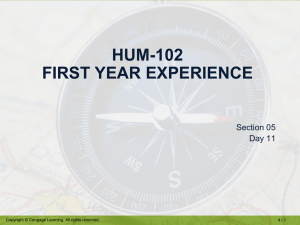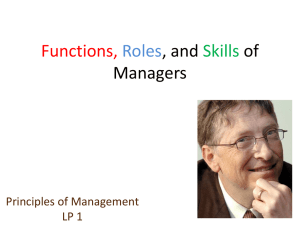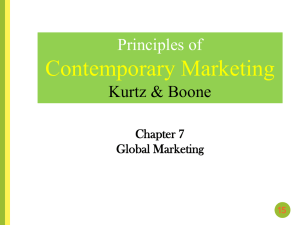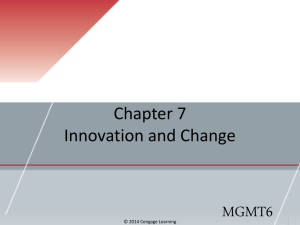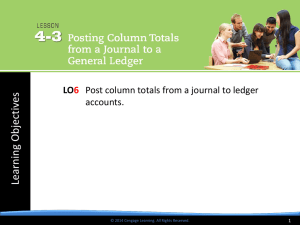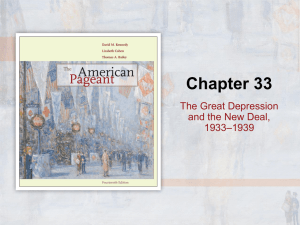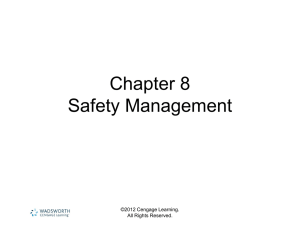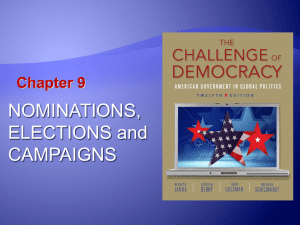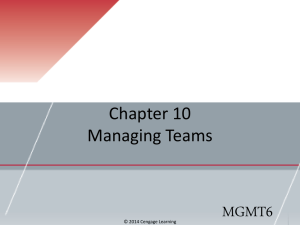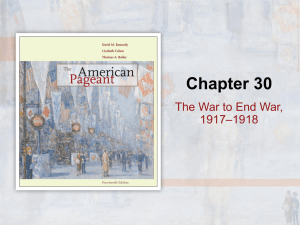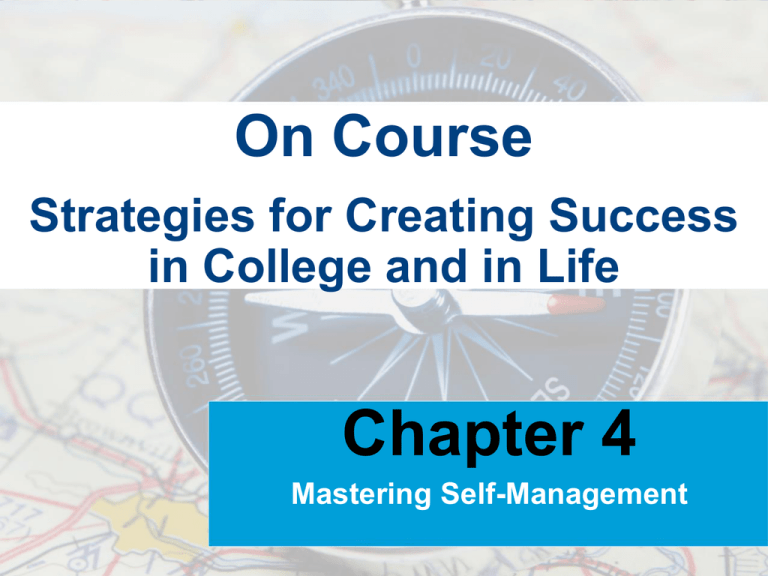
On Course
Strategies for Creating Success
in College and in Life
Chapter 4
Mastering Self-Management
CHOICES OF SUCCESSFUL STUDENTS
MASTERING SELF-MANAGEMENT
Copyright © Cengage Learning. All rights reserved.
4|2
REVIEW
What is the formula for motivation?
VxE=M
Who is responsible for my motivation?
I am
What are the five qualities of an effective goal?
Dated Achievable Personal Positive Specific
“Relax, use present tense, use all five senses and
feel the feelings” are keys to what?”
Effective Visualization
Copyright © Cengage Learning. All rights reserved.
4|3
REVIEW: IDENTIFYING
VICTIM & CREATOR STATEMENTS
I didn't study enough for this quiz;
I'm going to spend thirty minutes
every evening reviewing my
notes.
It’s not my fault I’m late. My stupid
alarm clock didn't work again.
That's three times this week!!
Boy, that parking lot sure is
crowded. I'm going to start getting
here fifteen minutes early.
Copyright © Cengage Learning. All rights reserved.
I can't believe my sister didn't
wash my clothes last night; I
didn't have anything to wear
today.
I am so stupid. I flunked
another math test. I wish math
was as easy for me as it is for
Kamika.
I didn't get the promotion. I'm
going to make an appointment
with my manager and get her
ideas on how to improve my
chances for next time.
4|4
CASE STUDY IN CRITICAL THINKING:
THE PROCRASTINATORS
What evidence do you see of “Victim
thinking” in the case study?
What self-defeating choices are Tracy and
Ricardo making?
Dive Deeper: Which person's situation,
Ricardo's or Tracy's, is more like yours?
Explain the similarities and identify what you
do to keep up with all of the tasks you need
to complete.
Copyright © Cengage Learning. All rights reserved.
4|5
ACTING ON PURPOSE
Focus Questions
Have you ever noticed how much highly
successful people accomplish?
How do they make such effective use of
their time?
Copyright © Cengage Learning. All rights reserved.
4|6
JOURNAL ENTRY 12: WARM UP
Make a list of at least ten things you did
yesterday.
On a scale of 1-10 (10 high), rate each item
as to how important it was to your goals and
dreams.
Next, rate each item on a scale of 1-10 as to
how urgent it was to do that day.
Were there any things you listed that might
actually be interfering with achieving your
desired outcomes and experiences?
Copyright © Cengage Learning. All rights reserved.
4|7
QUADRANT II TIME MANAGEMENT
Urgent
Quadrant I
Important
Starting research for a
10-page history term
paper the night before
it is due
Quadrant III
Not
Important
Letting friends talk you
into driving them to a
late-night pizza party
when you are 90 pages
behind in biology.
Copyright © Cengage Learning. All rights reserved.
Not Urgent
Quadrant II
Creating a detailed
study plan for the two
weeks before final
exams
Quadrant IV
Spending three hours on
Facebook when you
have a major math test
in two days
4|8
Four actions will appear, one at a
time. For each one, decide which
quadrant it best fits.
Copyright © Cengage Learning. All rights reserved.
4|9
QUADRANT II TIME MANAGEMENT
Urgent
Not Urgent
Quadrant I
Quadrant II
Quadrant III
Quadrant IV
Important
Spending
Staying
Studying
three
up all
till
every
hours
three
Staying
up
night
taking
a.m.
aplaying
friend
so
video
the
to night
cram
foryou'll
ato
test
mall
always
so
games
be can
ready
buyfor
a
theshe
next
day
new Blackberry
quizzes
Not
Important
Copyright © Cengage Learning. All rights reserved.
4 | 10
APPLYING THE CONCEPT
Why is spending a lot of time in Quadrants III and IV selfsabotaging?
The Unimportant actions in these quadrants don’t
contribute to the achievement of your goals and dreams.
Which Quadrant is most likely to produce maximum stress
with minimum positive returns?
III (urgent but not important)
What advantages are offered by choosing to spend time in
Quadrant II?
Consistent movement toward goals, less stress, greater
satisfaction & sense of control
Copyright © Cengage Learning. All rights reserved.
4 | 11
JOURNAL ENTRY 12: DIVING DEEPER
1. Pair up!
2. Student A: Read Journal Entry 12, Step 4 only, to
Student B.
3. Student B: "What I hear you saying is...."
Then, "A question I have is...."
4. Reverse roles and repeat Steps 2 and 3.
5. Continue discussing what you have both learned about
making wise choices regarding your use of time.
Copyright © Cengage Learning. All rights reserved.
4 | 12
ONE STUDENT'S STORY:
Jason Pozsgay
Jason Pozsgay says his greatest self-management
challenge in college was “distractions.” What is
your greatest self-management challenge?
What do you think was the most important
choice(s) Jason made to overcome his selfmanagement challenge? Please explain.
What choice(s) could you make to overcome your
greatest self-management challenge? Please
explain.
Copyright © Cengage Learning. All rights reserved.
4 | 13
CREATING A SELF-MANAGEMENT SYSTEM
Focus Question
How can you devote more time to creating
the outcomes and experiences that matter
most to you?
Copyright © Cengage Learning. All rights reserved.
4 | 14
JOURNAL ENTRY 13: WARM-UP
1. Divide into three groups. Each group take
responsibility for one of these self-management
tools: Calendar, Tracking Form, and Next
Actions List.
2. Re-read the description of the tool.
3. Each group, do a PMI-Q:
P = Plus (Identify Pluses about the tool)
M = Minus (Identify Minuses about the tool)
I = Interesting (Identify what’s Interesting to you about the tool)
Q = Question (Identify Questions do you have about the tool)
4. Each group, report your PMI-Q findings.
Copyright © Cengage Learning. All rights reserved.
4 | 15
REVIEW: SELF-MANAGEMENT TOOLS
MATCH EACH TOOL TO ITS DESCRIPTION
Provides a list of important
actions that need to be
done numerous times
to achieve a goal.
Monthly
Calendar
Provides a list of important
actions that need to be
done as soon as
possible.
Tracking
Forms
Provides a list of important
actions that can be done
only at a particular time.
Next
Actions
List
Copyright © Cengage Learning. All rights reserved.
4 | 16
ONE STUDENT'S STORY:
Allysa LePage
Effective self-management involves
prioritizing and sometimes letting go of less
important things, if only for a while. What did
Allysa choose to let go of?
Is there something in your life that you could
let go of (if only for a while) to free time to
accomplish something more important?
Copyright © Cengage Learning. All rights reserved.
4 | 17
DEVELOPING SELF-DISCIPLINE
Focus Questions
Do you find yourself procrastinating, even on
projects that mean a great deal to you?
How can you keep taking important,
purposeful actions even when you don’t feel
like it?
Copyright © Cengage Learning. All rights reserved.
4 | 18
DEVELOPING SELF-DISCIPLINE
What question can
you ask yourself to
strengthen focus?
What question can
you ask yourself to
enhance persistence?
Copyright © Cengage Learning. All rights reserved.
What are my
goals and
dreams?
Do I love myself
enough to keep
going?
4 | 19
ONE STUDENT'S STORY:
Holt Boggs
What do you think was the most important
choice that Holt made? Be prepared to
explain.
Think about a time when you made a
commitment to a positive change. What was
the commitment, and what were your
outcomes and experiences?
Copyright © Cengage Learning. All rights reserved.
4 | 20
SELF-MANAGEMENT AT WORK
What actions could you take while you
are in college that would look great on
your resume?
Copyright © Cengage Learning. All rights reserved.
4 | 21
BELIEVING IN YOURSELF:
DEVELOP SELF-CONFIDENCE
FOCUS QUESTIONS
In which life roles do you feel most selfconfident?
In which do you experience self-doubt?
What can you do to increase your overall
self-confidence?
Copyright © Cengage Learning. All rights reserved.
4 | 22
BELIEVING IN YOURSELF:
DEVELOP SELF-CONFIDENCE
Which of the following is already a strength of yours?
Which one most needs strengthening?
Creating a Success Identity
Celebrating Your Successes and Talents
Visualizing Purposeful Actions
Copyright © Cengage Learning. All rights reserved.
4 | 23
EMBRACING CHANGE
Choose one of the nine beliefs or behaviors from the list in
the Embracing Change activity.
For five minutes, write about how you will use this new
belief or behavior and the positive changes you think will
result.
Exchange papers with another student.
Read your partner’s paper and then write one thoughtful
question. The goal of the question is to encourage your
partner to dive deeper.
Return papers.
For five minutes, write a thoughtful response to your
partner’s thoughtful question.
Copyright © Cengage Learning. All rights reserved.
4 | 24
WISE CHOICES IN COLLEGE:
ORGANIZING STUDY MATERIALS
Review
What are the three principles of deep and
lasting learning?
• Prior Learning
• Quality of Processing
• Quantity of Processing
Copyright © Cengage Learning. All rights reserved.
4 | 25
WISE CHOICES IN COLLEGE:
ORGANIZING STUDY MATERIALS
Review
What are the components of the
CORE Learning System?
•
•
•
•
Copyright © Cengage Learning. All rights reserved.
Collecting
Organizing
Rehearsing
Evaluating
4 | 26
WISE CHOICES IN COLLEGE:
ORGANIZING STUDY MATERIALS
Draw a sketch or write a description of your
ideal study space. Be sure to include the five
key points from the section “Before
Organizing Study Materials.”
Which of the tips in “While Organizing Study
Materials” do you already use? Which of the
others seem most likely to help you improve
your studying effectiveness? Which ones will
you commit to using?
Copyright © Cengage Learning. All rights reserved.
4 | 27
KEY CHOICES FOR
MASTERING SELF-MANAGEMENT
Developing
SelfDiscipline
Employing
Self-Management
Tools
Acting
On Purpose
Copyright © Cengage Learning. All rights reserved.
4 | 28
TICKET OUT
What challenges have you had in the past
with mastering self-management? How will
this chapter help you?
Copyright © Cengage Learning. All rights reserved.
4 | 29
End
Chapter
Four
Copyright © Cengage Learning. All rights reserved.
4 | 30

